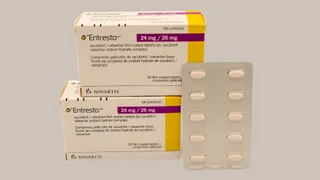
How to navigate patent term adjustment in China
Recent updates to China’s patent law provide guidelines on PTA calculations, definitions of delays and challenging decisions, say Audrey Cheung, Yolanda Wang and Jennifer Che of Eagle IP.
This article details the latest updates regarding patent term adjustment (PTA) in the Implementation Regulations and Examination Guidelines released in late 2023.
Below is the PTA calculation, according to an official article published by the CNIPA:
PTA compensation term = (D grant – D 4Y3Y) – T reasonable – T unreasonable (applicant)
where
D grant refers to the grant date of the application;
D 4Y3Y refers to the date that is more than four years from the filing date (‘D4Y’) and more than three years from the date of requesting substantive examination (‘D3Y’), whichever date is later.
T reasonable refers to the number of days due to ‘reasonable delay’, such as those caused by pauses in proceedings or property preservation;
T unreasonable (applicant) refers to the number of days due to ‘unreasonable delay caused by the applicant’ such as the time delay caused by the applicant’s request for an extension or request for a delayed examination.
Both ‘unreasonable delays caused by the applicant’ and ‘reasonable delays’ are subtracted from the compensation term of PTA, calculated in days.
For D4Y, the filing date that the four years are counted from is based on the type of application filed as shown in Table 1.
For D3Y, the date of requesting substantive examination from which the three years are counted depends on whether the application is already published (see Table 2). For applications that are not yet published, the ‘date of requesting examination’ is pushed back to the publication date.
This is because examiners could not begin substantive examination—even if a request for substantive examination is filed—until the application publishes.
Reasonable delay
Rule 78 of the Implementation Regulations and the Examination Guideline define the types of reasonable delay, which will be subtracted from the days of compensation:
* Regarding (1) re-examination, from the Patent Office’s perspective, if the applicant had made the necessary amendments earlier, re-examination would not have been needed. Therefore, this situation is regarded as an increased burden on the examiner and thus, a reasonable delay.
Unreasonable delay (applicant)
Rule 79 of the Implementation Regulations and the Examination Guidelines defines the types of unreasonable delay caused by the applicant, which will be subtracted from the days of compensation:
Same-date filing strategy
Rule 78.4 further excludes the eligibility of invention applications that take advantage of the utility model + invention ‘same day filing strategy’ (see our previous article). This refers to the situation where the applicant chooses to give up an earlier granted utility model patent to obtain the rights of the counterpart invention patent that was filed on the same day.
The same day filing strategy likely will result in automatic deferred examination of the corresponding invention application. While not officially documented, in practice we have learned that once the ‘same day filing’ invention is deferred, there is no way to speed it back up, which ultimately delays its grant significantly.
Challenging a decision
The decision can be challenged only once if rejected, then a final decision will be issued thereafter, which still can be appealed via an administrative review with the CNIPA.
Once the decision is made, the original patent term end date and the adjusted patent term end date will be registered in the patent register and published in the Patent Gazette in about two weeks.
Fee standards
The official fee for PTA requests is CNY 200 ($28) per patent.
If PTA (or patent term extension) is granted, the annuity fee during the patent compensation period is CNY 8,000 per patent/year. The annuity fee for the compensation period must be paid in a lump sum before the expiration of the 20-year patent term. No late payment, restoration, or fee reduction is applicable.
Observations
In reality, the CNIPA has become very efficient and most Chinese patents grant well within the required time period, making the likelihood of patentees receiving patent term compensation to be pretty low. In view of that, we would recommend that applicants continue to use ‘applicant delay’ type tools, if necessary, as part of their overall patent strategy if there are other benefits.
For example, it may sometimes be worth taking extensions to respond to office actions, even if there is a (small) risk that you will lose PTA. Oftentimes, the benefits of taking extensions outweigh the potential PTA gains. This, of course, needs to be determined on a case-by-case basis.
Having said that, applicants who qualify for PTA are successfully getting their requests granted within a couple of months. In general, the process has been smooth. We will continue to monitor the grants coming out of the CNIPA to see if the situation changes over time.
Audrey Cheung is a qualified Chinese patent attorney at boutique patent firm Eagle IP.
Yolanda Wang is a principal, Chinese patent attorney, and Chinese patent litigator at boutique patent firm Eagle IP.
Jennifer Che is president & managing director and a US patent attorney at boutique patent firm Eagle IP.

